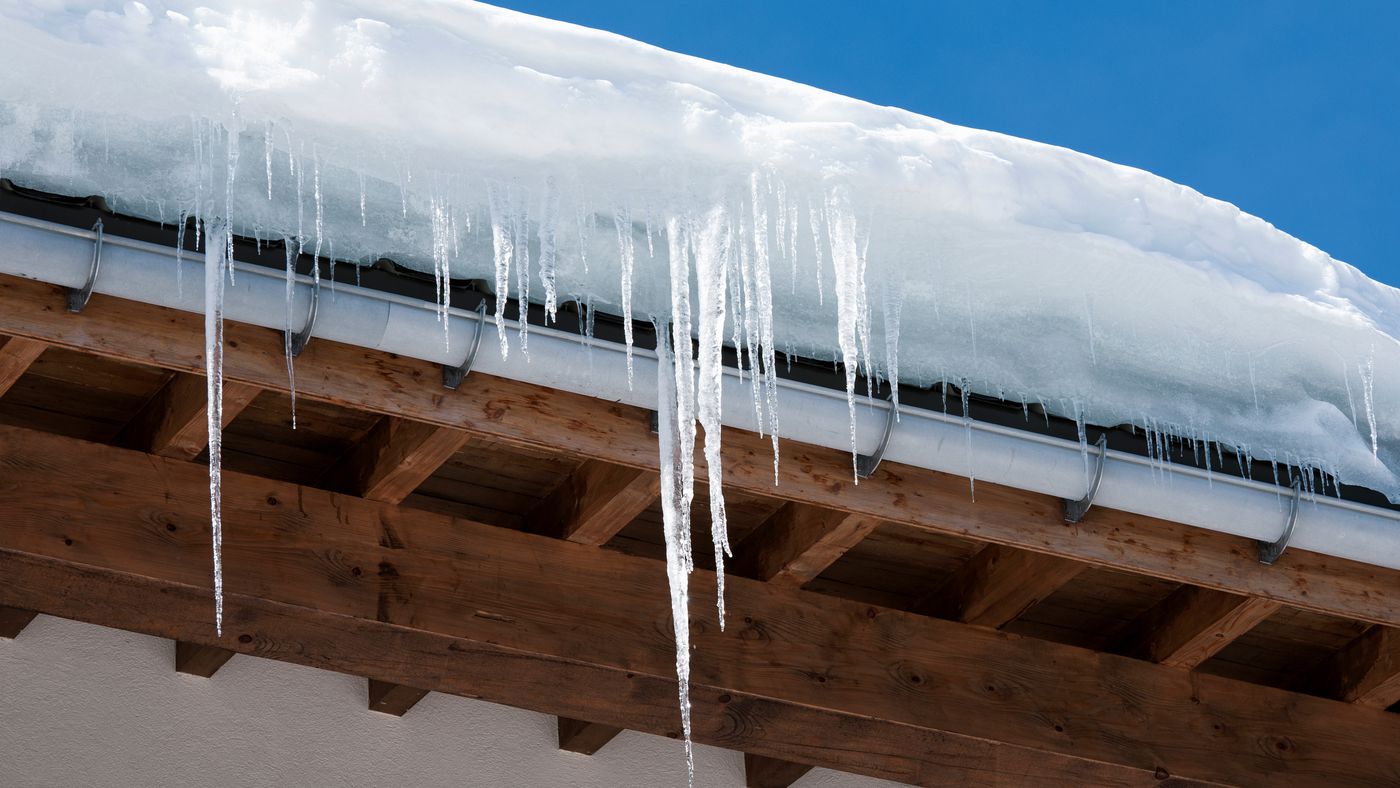Here in Chicagoland, we are no stranger to winter and its perils. However, many people still deal with ice dams forming on their roofs every year. These pesky dams can look pretty, but can cause many issues for the homeowner.
Luckily, ice dams can be prevented with our three prevention tips: insulating and venting the attic, raking the roof, and cleaning gutters. If these tips sound simple, it’s because they are! These tips can end up saving you quite the headache later if you follow them.
This article will discuss what an ice dam is and how it is formed, the damage it can cause, and discuss the above prevention tips more in-depth. Prepare to have a much less stressful winter this year.
What is an ice dam?
An ice dam is a ridge of ice that will form on the edge of a roof during the winter and prevent melting snow from draining. The water then pools behind the ice dam, and can leak through the shingles and into the home.
Ice dams are formed by heat loss from the home, snow, and fluctuating outside temperatures. The attic could be too warm, causing the roof to be hot. That effect is called heat loss, which will melt the snow.
The attic’s heat loss will not heat the roof’s edge since the edge does not cover the attic. That part of the roof in the winter is typically cooler than the rest because of this. If the temperature outside is 32 degrees Fahrenheit or colder, the melted snow will freeze at the edge of the roof.
As snow continues to melt and then freeze, an ice dam will form over time. The dam will cause the rest of the melted snow to pool up behind the dam. That water will then find its way under the shingles and into the home (more on the damage the water will cause later).
Most ice dams are easy to spot. If icicles form on the edge of your roof and gutters, you most likely have an ice dam. You can also typically see the buildup of ice on the roof edge. Some more severe signs of an ice dam are visible ice and water on the home’s siding, ice and water inside or around a window frame, and ice coming from soffit vents.
Once you have an ice dam, never fix it yourself. Hire a professional like our professionals at Baltic Roofing. Training is required to remove ice dams safely and effectively, and to know if there is severe damage to the home or not.
Read more : home improvement write for us
 Lifeyet News Lifeyet News
Lifeyet News Lifeyet News





